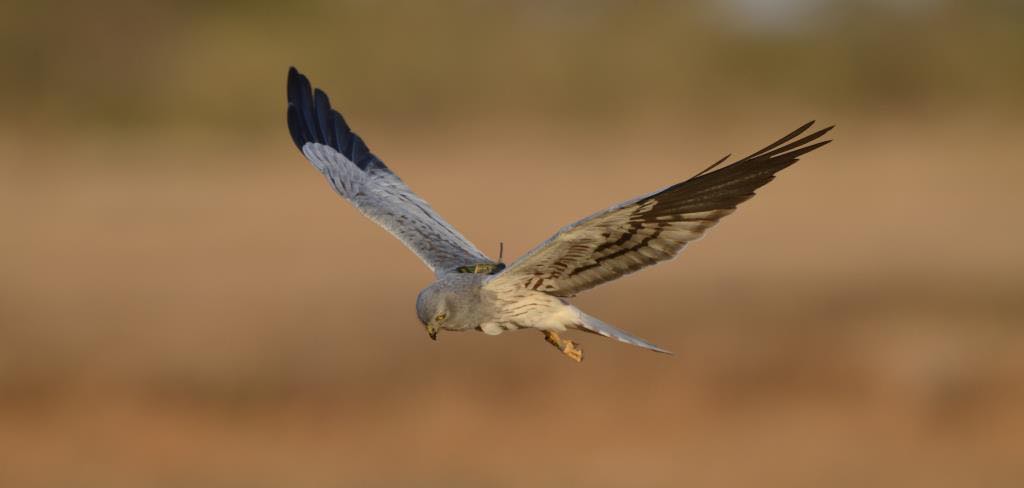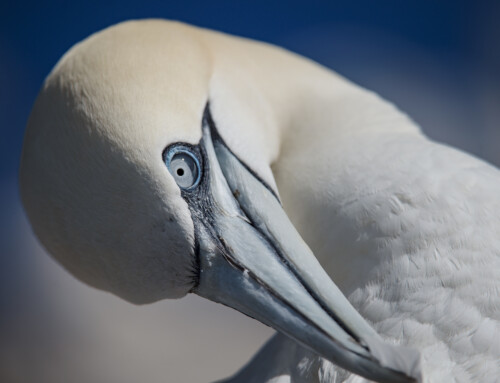Birdfields – a novel Agri-Environmental Scheme to improve foraging conditions for a vole-eating raptor
LINKED PAPER
Testing a novel agri-environment scheme based on the ecology of the target species, Montagu’s Harrier Circus pygargus
Schlaich, A.E., Klaassen, R.H.G., Bouten, W, Both, C & Koks, B.J. 2015. IBIS 157: 713-721. DOI: 10.1111/ibi.12299 View
The Montagu’s Harrier is a rare farmland breeding bird, not only in the UK, but also in the Netherlands where we have a small population of around 40 pairs. In the highly intensified agricultural landscape farmland birds struggle to find sufficient food to breed successfully. We tested a novel agri-environment scheme (AES) – coined Birdfields – to provide accessible food sources for breeding Montagu’s Harriers.
A small population of Montagu’s Harriers established in our study area in Eastern Groningen, the Netherlands, in the early 1990s when farmland was set aside on a large scale to counteract wheat overspill (Koks et al. 2007). The set-aside habitat was used for foraging, and the harriers nested in large wheat fields that characterize this intensively farmed area. After the set-aside regulation ended, the number of breeding pairs directly decreased again. To preserve Montagu’s Harriers for the Netherlands, agri-environment schemes (AES) like field margins and set-aside fields were introduced. This led to an increase in numbers and we nowadays have a population fluctuating around 40 breeding pairs (Figure 1).

In the Netherlands, Common Voles are the most important prey, which is exemplified by the fact that vole abundance determines breeding success and population growth (Koks et al. 2007). In order to understand where Montagu’s Harriers exactly find these prey in the intensively farmed landscape, and the exact role of AES in this, we tracked individual harriers using radio-transmitters and UvA-BiTS GPS-loggers. Surprisingly, the birds were not spending much time hunting on set-aside, but strongly preferred freshly mown grass fields (Trierweiler 2010, Klaassen et al. 2014). This seems paradoxical as vole abundance is much higher in set-aside habitats compared to other crops (Koks et al. 2007, Schlaich et al. 2015). The answer probably lies in the fact that prey are difficult to capture in dense set-aside vegetation. Thus, prey availability rather than prey abundance per se dictates habitat selection in foraging harriers.
Integrating knowledge on the Montagu’s Harrier ecology, we designed a novel AES – coined Birdfields – that aims at increasing both prey abundance and availability. Birdfields consist of alternating strips of set-aside and alfalfa (Figure 2). Set-aside strips are sown with a mixture of cereals, grasses and herbs, and their most important function is to enhance local densities of voles. Alfalfa strips are harvested three times per year, and their main function is to enhance prey availability. An additional advantage of growing alfalfa is that the harvest of alfalfa reduces the overall costs of the AES, making Birdfields a more economical alternative to current AES.

In 2011, two Birdfields were created close to a core breeding area of Montagu’s Harriers. These Birdfields were monitored in 2012-2013. During the same period, high-resolution tracking data of individual male Montagu’s Harriers was collected using UvA-BiTS GPS-loggers. With the help of volunteers vole abundance was monitored in set-aside and alfalfa strips, and small mammals killed during the mowing events were identified (Figure 3). This involved counting vole burrows in 6184 1m²-plots and walking 93.9 km behind the mowing machine! As expected, vole abundance was much higher in set-aside than in alfalfa, and nearly 90% of all observed small mammals were Common Voles. Detailed tracking data from four male Montagu’s Harriers in each season showed that birds used the Birdfields intensively during and after mowing events, in which the birds strongly preferred mown over unmown habitat (Figure 4).


Our results show that Birdfields form an efficient AES for Montagu’s Harriers as this novel measure not only enhances prey abundance but also prey accessibility. In addition, it is a more economic AES. Furthermore, many other species seem to profit from Birdfields in particular breeding Skylarks, breeding and wintering vole-eaters and wintering farmland birds. Consequently, the measure ‘Birdfields’ has now been officially implemented as a greening measure in the new Common Agricultural Policy (CAP) in Pillar 1 and Pillar 2 in The Netherlands. Meanwhile, the Ministry of Economic Affairs has started a country-wide pilot, executed by BirdLife Netherlands, Louis Bolk Instituut and the Dutch Montagu’s Harrier Foundation, to evaluate scientifically the general value of Birdfields for soil, insects, and farmland birds and already 230 ha of Birdfields have been implemented throughout the Netherlands. More than 300 ha will follow in 2016.
References and further reading
Klaassen, R. H. G., A. E. Schlaich, M. Franken, W. Bouten & B. J. Koks. 2014. GPS-loggers onthullen gedrag Grauwe kiekendieven in Oost-Groningse akkerland. De Levende Natuur 115:61-66. View
Koks, B. J., C. Trierweiler, E. G. Visser, C. Dijkstra & J. Komdeur. 2007. Do voles make agricultural habitat attractive to Montagu’s Harrier Circus pygargus? Ibis 149:575-586. View
Trierweiler, C. 2010. Travels to feed and food to breed. The annual cycle of a migratory raptor, Montagu´s harrier, in a modern world. PhD, University of Groningen, Groningen. View
Image credits
Featured image: Montagu’s Harrier © Ben Koks; Photo of author © Johan Poffers; others as credited.




